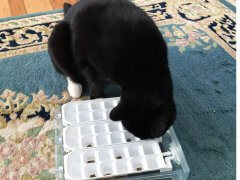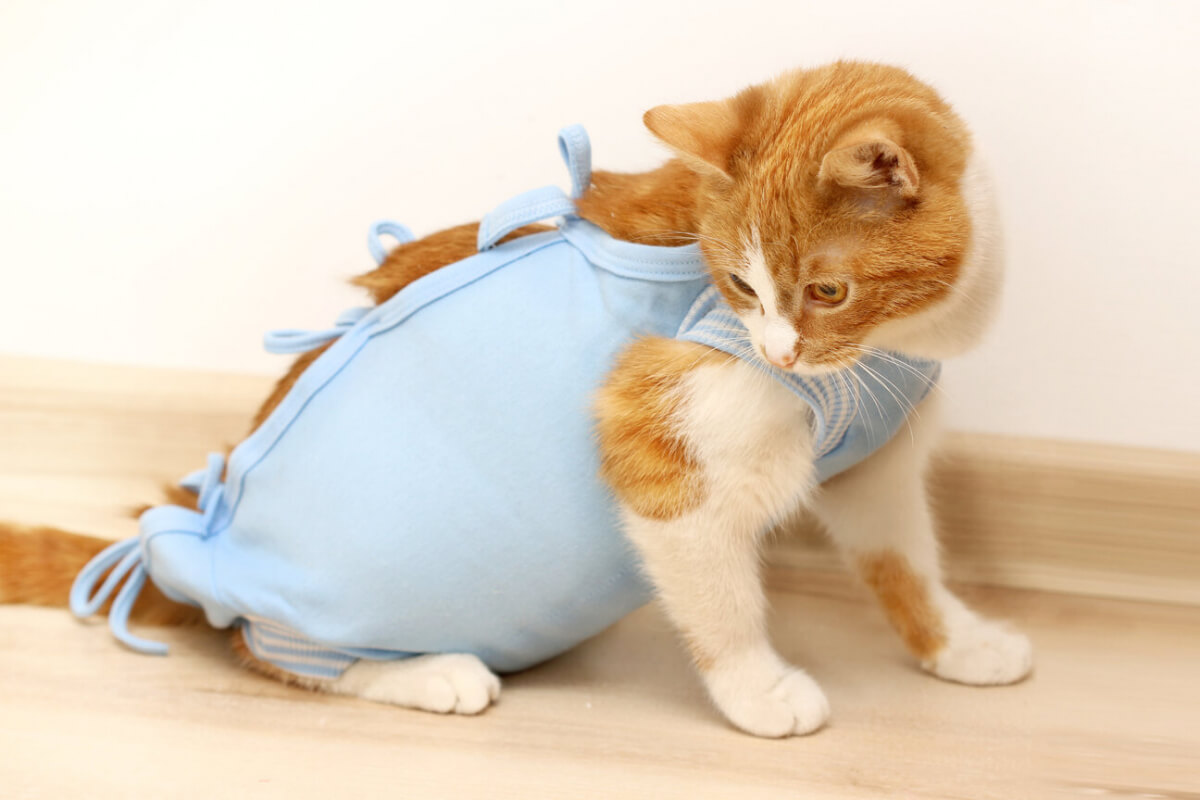
A cat in a cone is always a pitiful sight. Officially called Elizabethan collars, or e-collars, these plastic devices look silly and uncomfortable, but they serve an important purpose.
Every cat that undergoes surgery, whether it’s a spay surgery or a procedure to save their lives after an injury or illness, needs to leave their surgical incision alone in order for it to heal.
And because you can’t simply give your cat these live-saving instructions and expect them to follow through, e-collars are unfortunately necessary to keep your cat’s tongue and teeth from causing more damage.
The problem is, that these plastic contraptions interfere with a cat’s movement, and eyesight, and they’re outrageously irritating for an animal that is accustomed to being swift and graceful.
Also Read: How To Keep Your Cat From Jumping After Surgery
The good news is, that the plastic collar you get from the vet isn’t your only option when it comes to surgical aftercare. Here is a collection of both store-bought and DIY cat cone alternatives to help your cat through recovery.
1. Cloth Collars
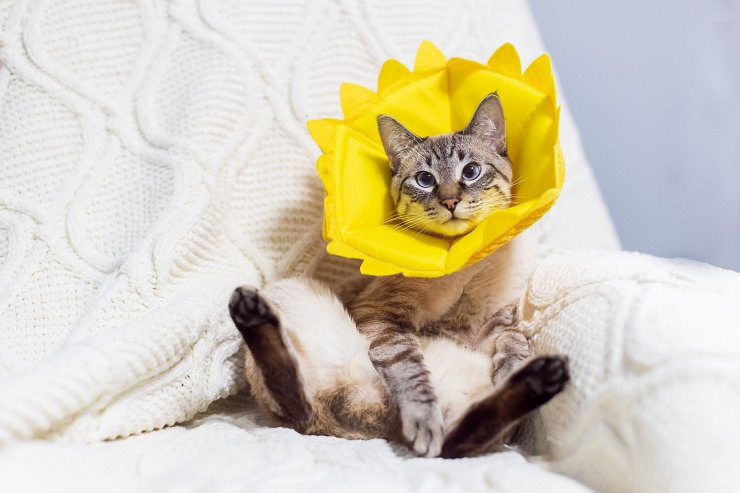
You can purchase these soft e-collars from most pet stores, and it’s also not hard to make one yourself.
Part of the problem with traditional e-collars is the thick, inflexible plastic. It’s common for cats to run into objects when first adjusting to the collar, and that hard plastic catches on anything and everything. Plastic recovery cones scrape against walls, the floor, and even your shins. That jarring movement is uncomfortable and even painful for your cat.
Cloth cones eliminate this problem, because they are made from softer, more flexible material. They attach to the cat’s collar in the same way as a traditional cone, but the cone itself is much more forgiving. You can purchase these soft e-collars from most pet stores, and it’s also not hard to make one yourself. Keep in mind, however, that some determined cats can manipulate the fabric to get to their stitches. If you make your own soft collar, you’ll need fabric that is somewhat stiff to resist your cat’s more serious maneuvers.
2. Inflatable Collars
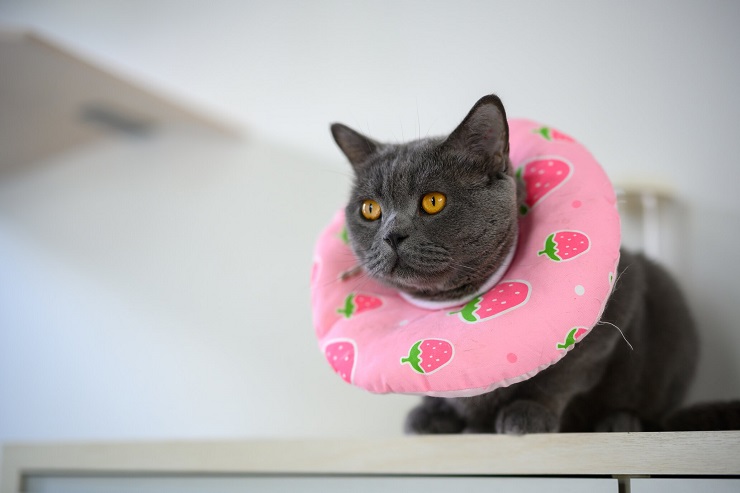
Unlike the cone of shame, this cat cone alternative doesn’t usually block the cat’s vision.
An inflatable e-collar is essentially a miniature version of an inflatable pool tube. These blow-up devices attach to the cat’s collar and go all the way around their neck.
Unlike the cone of shame, this cat cone alternative doesn’t usually block the cat’s vision. The majority of the “cone” extends outward instead of forward which can also make walking and eating a lot less awkward. These store-bought products come in lightweight plastic and soft fabric that makes them more comfortable.
The one downside of an inflatable e-collar is that feline claws and teeth can sometimes puncture the product and render it floppy and useless. You might be able to repair small holes with cellophane tape, but if your cat popped it once, they’ll likely do it again.
3. Pillow Collar
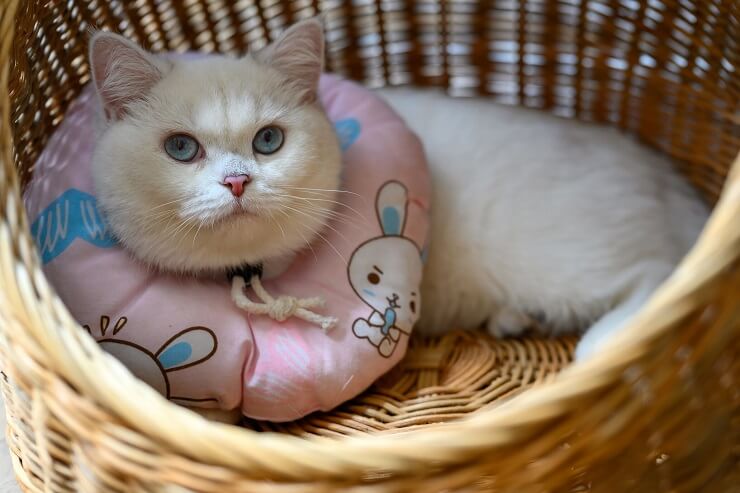
Consider your cat’s size and strength before attaching a pillow collar. Because of the fluffy size, a comfy cone is typically heavier than other models.
Similar to the inflatable donut collar, a pillow collar goes all the way around the pet’s neck without protruding forward past the face. Instead of being filled with air, however, this collar is a soft pillow filled with fluff (or possibly beads).
This design allows the cat to keep most of their peripheral vision, and they won’t run into walls and doorways when trying to walk around the house. An added bonus of this cat cone alternative is that it makes a supremely comfortable place for kitty to rest their head, and it’s durable.
Consider your cat’s size and strength before attaching a pillow collar. Because of the fluffy size, a comfy cone is typically heavier than other models. This might not be a problem for a strong, healthy cat, but a small kitten or cat that is weak from injury or illness might struggle to support the extra weight.
4. Cat Clothing

It can be great for cats that absolutely will not tolerate something around their neck, but some cats also vehemently reject all kinds of clothing.
This fourth cat cone alternative isn’t a cone at all. It doesn’t even go around your cat’s neck. If you need to prevent your cat from licking, biting, and pawing at an incision, sometimes dressing them in clothes is an effective option.
You can buy a specially-designed surgical recovery suit or try out a regular cat shirt, newborn baby clothes (cut an opening for the tail), or even a small dog sweater. Surgical recovery clothing is often the easiest to get on and off your cat, but it can also be pricey. If you choose another option, make sure the material fully covers the area you need to protect and is made from a comfortable, breathable material.
As with most things in life, this cat cone alternative isn’t perfect. It can be great for cats that absolutely will not tolerate something around their neck, but some cats also vehemently reject all kinds of clothing.
If your cat seems completely miserable wearing clothes, another type of cone might be better. It’s also important to note that if the incision is particularly itchy or irritating, some cats might scratch or chew right through the clothing.
5. Neck Control Collar
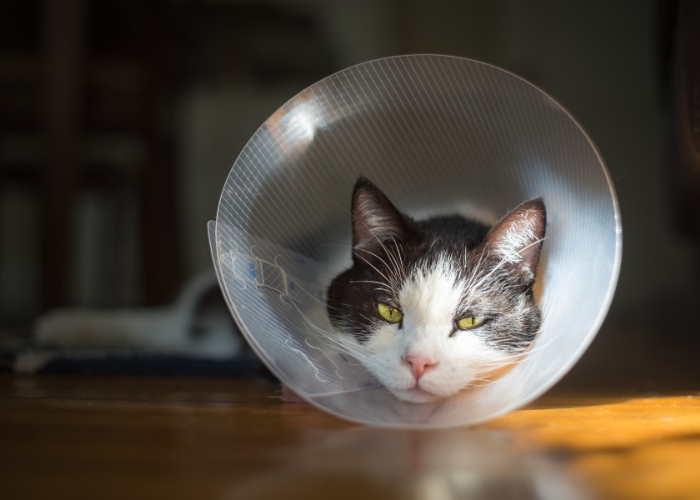
Cat wearing a traditional cone, i.e. Elizabethan collar
Most often used for dogs, a neck control collar can also work for cats that are pros at escaping the cone-type collars. The device consists of a thick, padded collar that restricts how much the animal can move its neck.
Most people only recommend this type of collar as a last resort. They work almost too well, and your cat will be extremely restricted when they try to move their head. That limited movement is considerably uncomfortable and can make cats feel stressed and sometimes panicked. It will, however, keep your cat from hurting themselves further after a major surgery.
All of these cat cone alternatives offer your cat a better chance at a fast and (at-least slightly) less miserable recovery. If you have questions about what kind of collar or clothing will work best for your cat based on comfort and the location of their incision, don’t forget to ask your veterinarian or vet techs.
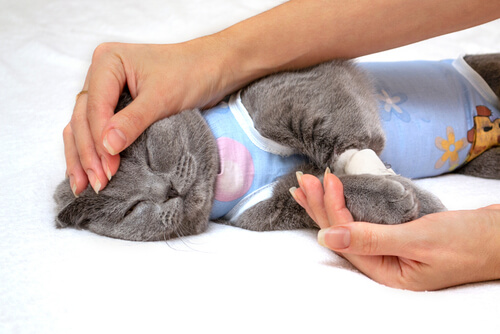
All of these cat cone alternatives offer your cat a better chance at a fast and (at-least slightly) less miserable recovery.


